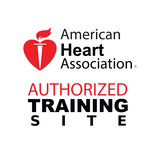What is Agonal Breathing? What It isn't? Why Is It A "Good" Sign?

What are Agonal Breaths?
Agonal breaths or respirations are, in essence, the body's last-ditch effort to deliver oxygen to the vital organs. When a victim of cardiac arrest's heart ceases to pump blood due to a disorganized rhythm, the breathing center in the brain begins to starve for oxygen rich blood. This is called "ischemia." In this state, the brain-stem initiates a reflexive type of "breathing" characterized by an infrequent, sudden, shallow gasp. This reflexive breathing pattern is made possible through the sudden spasm of both the diaphragm and the muscles in the jaw that can occur for up to several minutes following cardiac arrest.
To the untrained eye, the sudden expansion of the chest and opening of the mouth may look similar to normal breathing, but this phenomena is in fact anything but normal.
Agonal Breathing Is Not Normal Breathing
Normal, life-sustaining breathing is typically smooth, rhythmic, and quiet. Agonal respirations are sudden, irregular and normally accompanied with a snoring sound or gasping vocalization as a small amount of air enters the lungs. Studies show that up to 40% of cardiac arrest victims exhibit an agonal breathing pattern. For this reason, it is important to realize that when an unresponsive person is seen with agonal-type breathing it is a sign of the need for CPR and AED use for lay-providers, and for healthcare providers, it is a prompt for carotid pulse assessment .
The Curse and Blessing of Agonal Breaths
The Curse - Responder Confusion
Far too often, bystanders and even healthcare professionals witness agonal breathing and assume the victim has a beating heart. This results in a failure to begin resuscitation when in fact, the patient is in desperate need of CPR and defibrillation. With 30-40% of cardiac arrest victims experiencing agonal respirations, the need for bystanders and EMS personnel to recognize this phenomena and respond appropriately is vital.
The Blessing - A Window Of Opportunity
Seconds matter in cardiac arrest with the probability of successful resuscitation being highest within the first 3 to 4 minutes of the event. Since we know that agonal breaths are only present during the first few minutes after cardiac compromise, even in an un-witnessed arrest, their presence can be reassurance that this window of opportunity is still open.
Responding to Agonal Breathing
for Laypersons
Outside of the hospital setting, the lay-provider is the most likely candidate to witness agonal breaths in a cardiac arrest victim. This is the point where quality of your CPR training comes into play.
Once you recognize the presence of the quick, reflexive, and irregular gasps in an unresponsive person, you should be assured of the victim's need for immediate CPR and rapid defibrillation. The best results will occur with high-quality CPR being performed until a readily available AED is applied and instructs you to pause CPR.
Remember, victims taking agonal breaths are treated the same way as victims who are not breathing at all. Activate the emergency response system, use an AED, and perform CPR in the meantime.
For Healthcare Providers
Remember your Basic Life Support training. Your next action when you see an agonal breath in an unresponsive patient is to call for help and assess for a carotid pulse. If there is no definite, strong pulse felt within 5 to 10 seconds, begin CPR while the cardiac defibrillator or AED is being applied. Also remember that in the interest of not interrupting life-giving chest compress ions, we do not reassess a carotid pulse until we see signs of life in the presence of an AED, or we see the presence of an organized rhythm on the cardiac monitor. Continued agonal breaths during CPR are not considered signs of life as are normal spontaneous breathing and purposeful movement.

About the Author:
Randy Boone is the founder of CarePoint Resources. He serves his community as a Fire Department Paramedic and Apparatus Operator. Randy and the CarePoint team of educators work to equip the workforce and public with lifesaving skills and information through CPR training and certification. www.carepointresources.com



